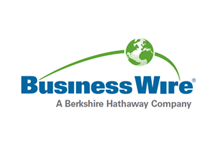Worldwide Shape Memory Alloys Market to 2030 - by Type, End-Use Industry and Region - ResearchAndMarkets.com
The "Shape Memory Alloys Market by Type and End-Use Industry: Global Opportunity Analysis and Industry Forecast, 2021-2030" report has been added to ResearchAndMarkets.com's offering.
The global Shape Memory Alloys market was valued at $9.2 billion in 2020, and is projected to reach $19.5 billion by 2030, growing at a CAGR of 8.2% from 2021 to 2030.
Shape memory alloys (SMAs) are metals that have two very distinct properties: pseudo-elasticity and shape memory, these two unique properties are made possible by a solid-state phase change, which is a molecular rearrangement that occurs in the solid state. A molecular rearrangement occurs in a solid-state phase change; however, the molecules stay closely packed, resulting in substance remaining solid. A temperature shift of only about 10 degree C is required to trigger phase change in most shape memory alloys. Martensite and Austenite are the two phases found in shape memory alloys.
At lower temperatures, martensite is the comparatively soft and readily deformed phase of shape memory alloys. This molecular structure is twinned and when deformed, it takes on the second form Austenite. Austenite structure is cubic in form. On a macroscopic scale, the un-deformed Martensite phase is the same size and shape as the cubic Austenite phase, hence no size or shape change is observable in shape memory alloys until the Martensite is deformed.
One of the major factors driving growth of the shape memory alloy market is the expanding automotive industry. Significant advancements in other sectors such as civil, robotics, defense, biomedical, and aerospace also propels demand for SMAs. With rise in popularity of consumer electronics around the globe, SMAs that can be stretched or bent to meet the needs of the user are becoming more popular. In addition, another element driving the SMA market is rise in popularity of nitinol alloys. SMAs are used in the medical industry to make medical implants such as stents, dental wires, orthopedic screws, and other surgical equipment. Other factors expected to boost the market in the future include increased product adoption in the aerospace sector, increased defense spending by governments of both established and emerging nations, and considerable expansion in the construction industry.
Furthermore, the market is expected to grow as these alloys are used in safety equipment such as anti-scalding and fire sprinklers. Anti-scalding valves manufactured from these metals can be used in water taps and sprinkler systems, as they automatically cut off water flow when temperature reaches a specified level. The fundamental disadvantage of shape memory alloy-based fire sprinklers is the response time delay.
However, certain factors are expected to restrain growth of the shape memory alloys market. The market is restrained by high cost of these alloys and sensitivity of material properties during manufacturing process.
Key Benefits
- The report provides in-depth analysis of the global shape memory alloy market along with the current trends and future estimations.
- This report highlights the key drivers, opportunities, and restraints of the market along with the impact analysis during the forecast period.
- Porter's five forces analysis helps to analyze the potential of the buyers & suppliers and the competitive scenario of the global shape memory alloy industry for strategy building.
- A comprehensive market analysis covers factors that drive and restrain the global shape memory alloy market growth.
- The qualitative data about market dynamics, trends, and developments is provided in the report.
Impact of COVID-19
- COVID-19 has spread to almost 213 countries around the globe with the World Health Organization declaring it a public health emergency on March 11, 2020.
- Some of the major economies suffering from the COVID-19 crises include Germany, France, Italy, Spain, the UK, and Norway.
- Shape memory alloys are primarily used in medical, automotive, aerospace & defense industries.
- In many countries, the economy has dropped due to the halt of several industries, especially transport and supply chain. Demand for the product has been hindered as there is no development due to the lockdown.
- The demand-supply gap, disruptions in raw material procurement, and price volatility are expected to hamper growth of the industry during the COVID-19 pandemic.
- Due to a scarcity of resources in various parts of the world, the COVID-19 epidemic has impacted negatively on the manufacturing and industrial industries. The industry's top players are concerned about the market's prospects and are rethinking their strategies to meet the challenge.
- Companies are incorporating various techniques to increase production volume and are attempting to develop innovative solutions at an affordable price that can meet customer requirements at a lower cost and support the overall breakthrough required for increased fragrance product penetration sustainability.
Market Dynamics
Drivers
- Increased demand from biomedical sector
- Increase demand from automotive industry
Restraint
- Fluctuation in raw material cost
Opportunities
- Increasing demand from electronics industry
Challenges
- Pandemic and its effect on the actuator market
Key Market Players
- Furukawa
- Johnson Matthey
- Metalwerks Inc.
- G. Rau GmbH & Co. KG
- Fort Wayne metals
- Xi'an Saite Metal Material
- Seabird Metal
- Dynalloyinc
- Saes Gaetters
- Ati Specialty Alloys & Components.
For more information about this report visit https://www.researchandmarkets.com/r/x7ponj
View source version on businesswire.com: https://www.businesswire.com/news/home/20211124005912/en/



